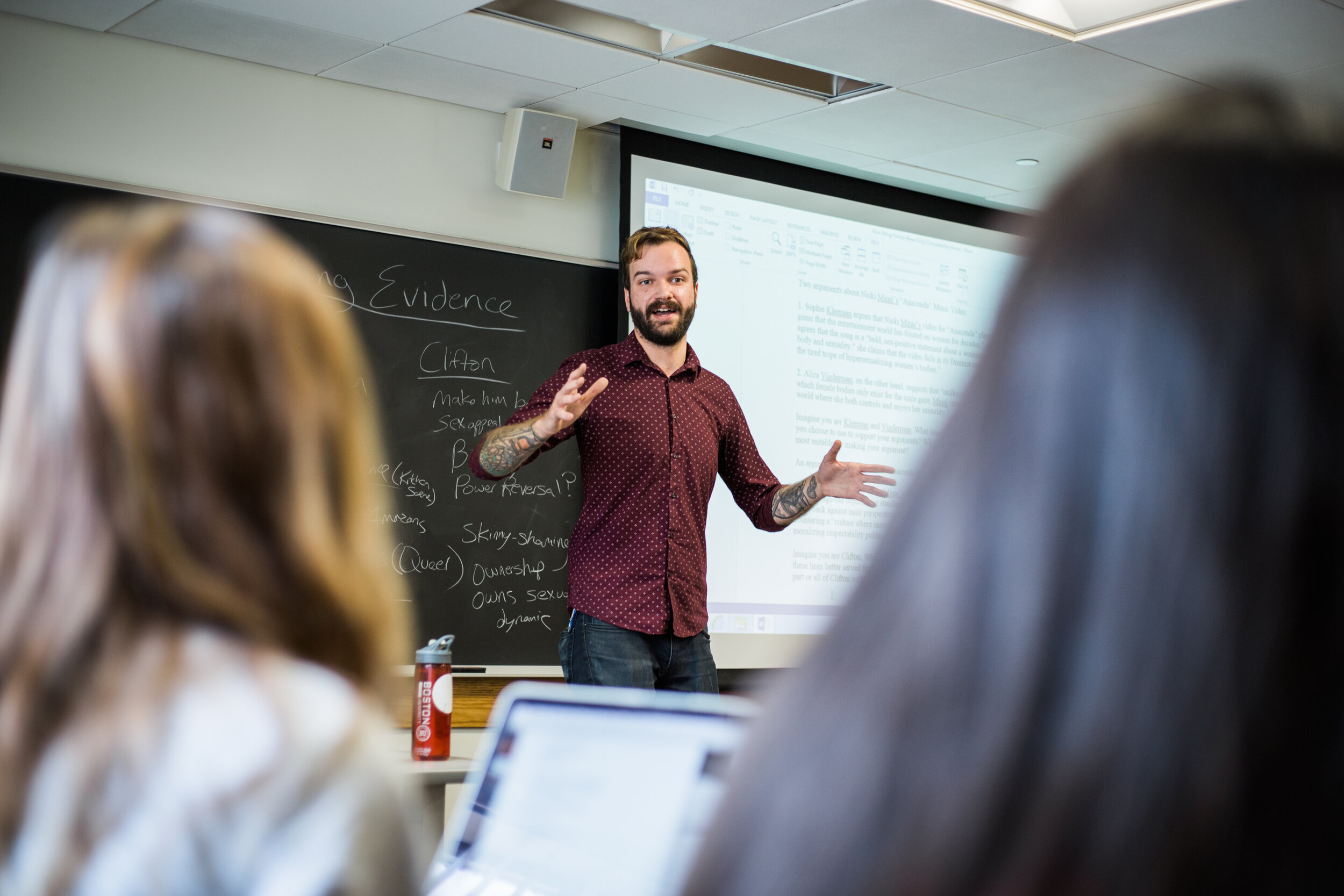
Teaching Philosophy
In my literature and writing seminars, I often use a short excerpt from Emily St. John Mandel’s post-apocalyptic novel Station Eleven as an example of how to perform a close-reading. The passage represents a character holding a snow globe for the first time in decades in the “Museum of Civilization,” a collection of artifacts from the novel’s pre-pandemic world considered now to be obsolete. After distributing scanned versions of the passage and supplying relevant context, I ask students to annotate the text—marking key phrases, drawing arrows to establish connections, and using the wider-than-normal margins to jot comments or pose questions. My guiding questions emphasize content, form, and meaning—“What?”, “How?”, and “Why?”
Students unfamiliar with the practice of close-reading tend to discuss the world before the novel’s pandemic, imagining a general nostalgia for a “time before.” I encourage them to reread the passage again, but this time more slowly, and to really make a mess of the handout with their annotations. As they explore the form of the passage, they notice Mandel’s repetition of the imperative “Consider” at the beginning of every sentence: “Consider the snow globe. Consider the mind that invented the miniature storms […].” Students follow her imperative by considering how the passage addresses “the factory worker” who created the fake snow for the snow globe, “the assembly-line worker” who operated the conveyor belt “somewhere in China,” “the hands of the woman who inserted the snow globe into boxes,” the “sailors” who transported the boxes around the world on ships, and the “UPS man” who delivered them. They recognize that a snow globe isn’t just a relic from a “time before”; it is connected to global histories of invisible labor, production, and distribution.
The goal of this exercise, and of my teaching more broadly, is to demonstrate the importance of attending to texts and the issues they raise from multiple vantage points and within the specificities of their historical, aesthetic, and ethical contexts. In other words, my teaching is to build upon this imperative to “Consider.” Urging students to inhabit the spaces and social realities of diverse texts, topics, and their contexts implicitly asks them to consider their own ethical and political positions; to distinguish forms of power, privilege, and access; and to challenge oppressive structures that disproportionately affect marginalized communities. When I invite my students in my courses on infrastructure and the arts, for example, to scrutinize how Colson Whitehead dramatizes social habitus and affective attachments through a commuter’s daily trip on the MTA in The Colossus of New York or how Karen Tei Yamashita makes visible social, political, and environmental systems that often go unnoticed through Manzanar Murakami’s surrealist infrastructural symphonies in Tropic of Orange, I am not merely asking them to respond academically to an object of study. Rather, I am asking them to reflect on their own positions within larger social, economic, and technological systems. I am asking them to scrutinize their capacities for participation and potential complicity within the various structures that have come to organize the world. I am asking them to pose questions about equity, access, and belonging. I am asking them to see the world as it is and not merely to be willing to imagine what it could be, but rather, to be willing to take tangible actions to transform it.
Students today come from a unique generation that recognizes and struggles with their collective responsibility in the face of our contemporary challenges. I believe it’s imperative as educators to give them the space necessary for continuing to ask these questions, and even more importantly, to give them the tools necessary for answering them beyond the classroom.